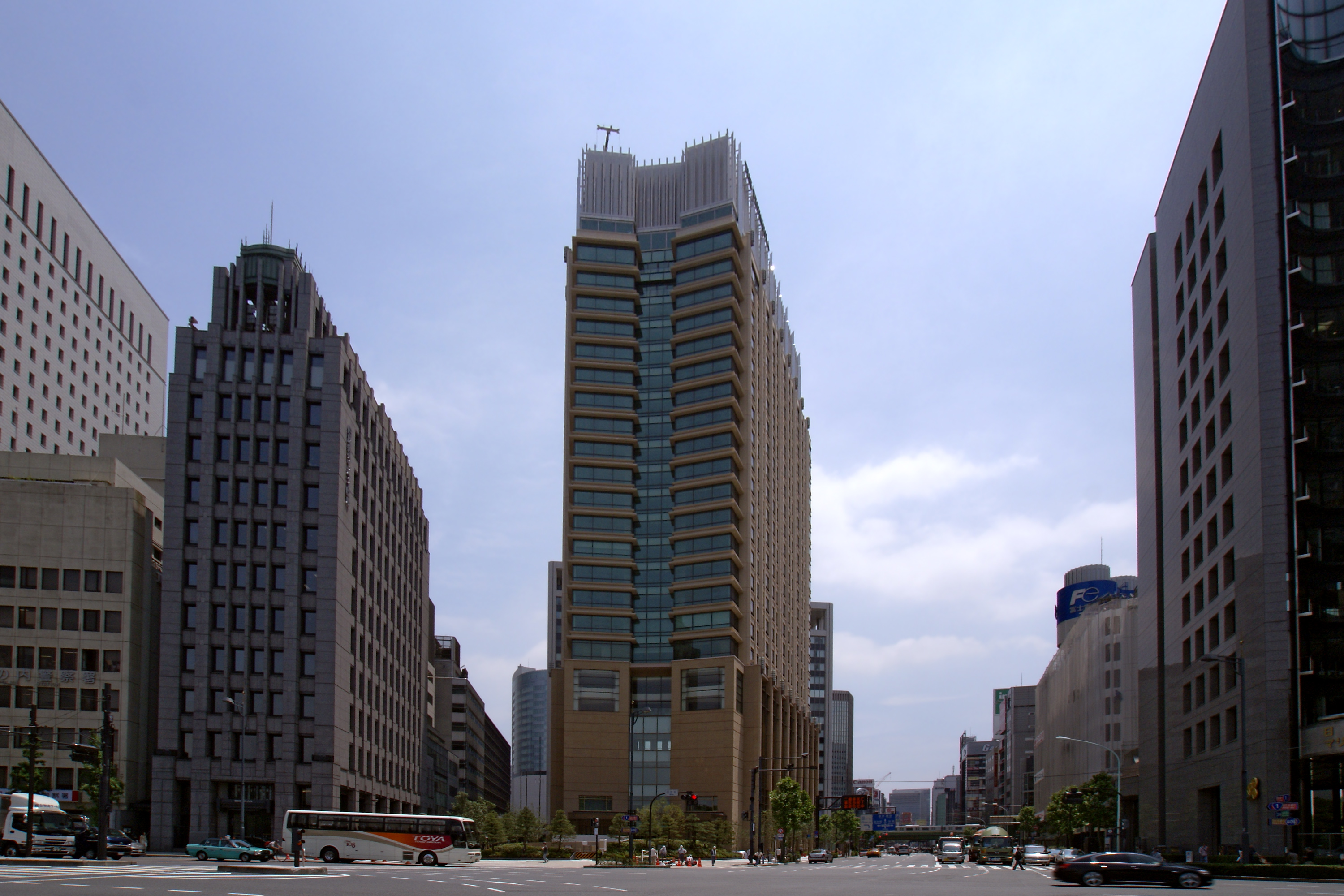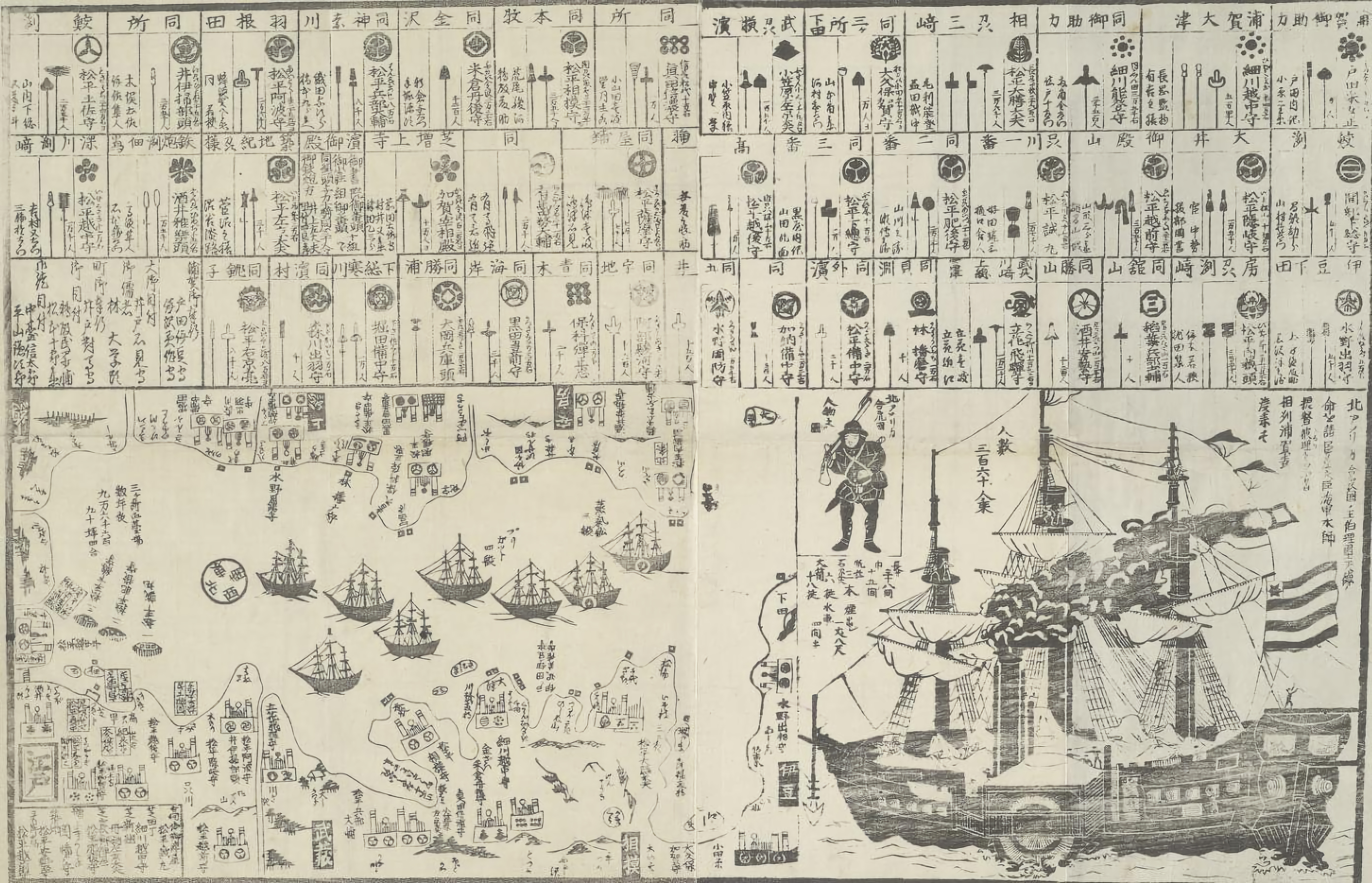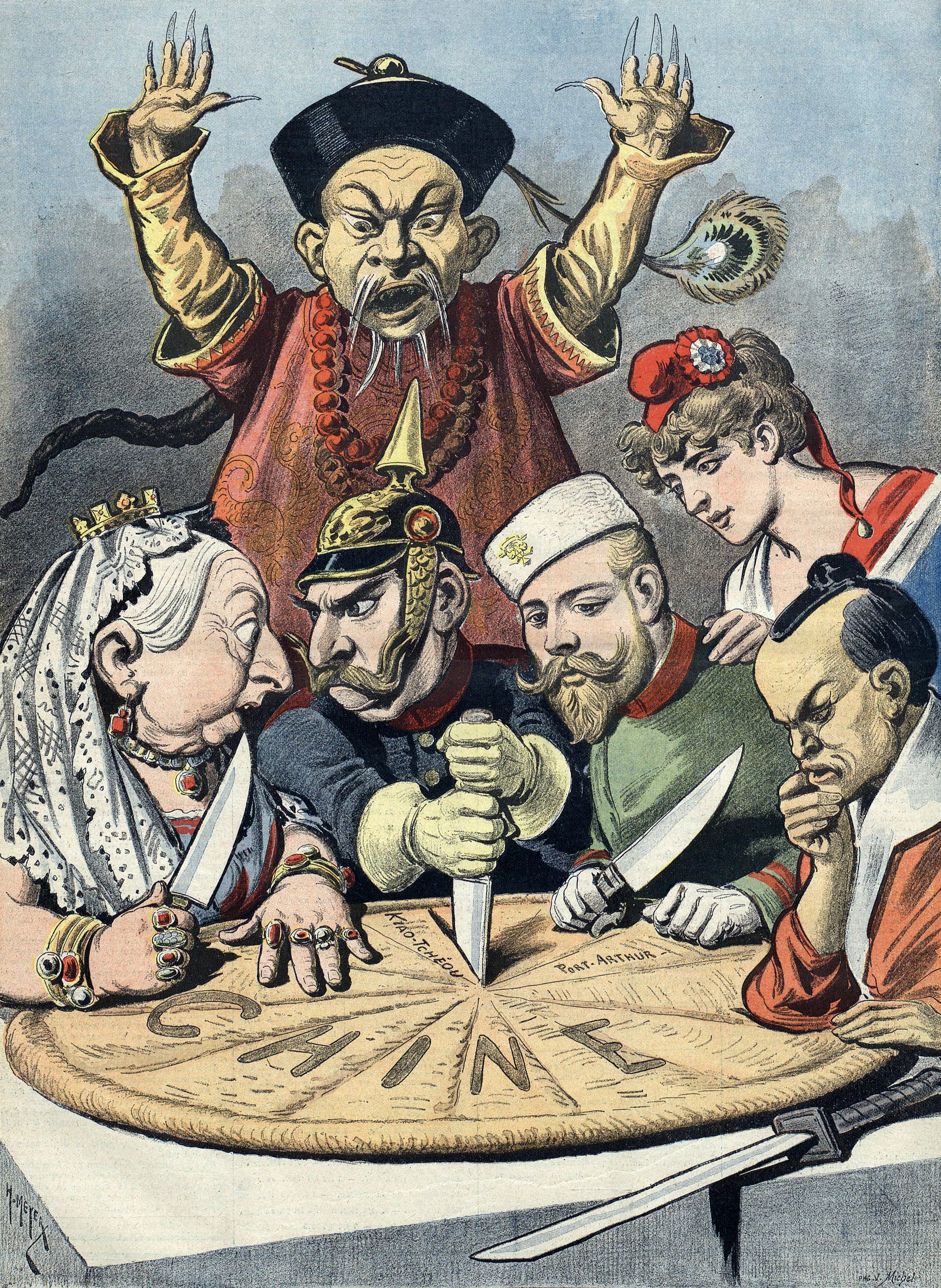|
Era Of Popular Violence
The Era of Popular Violence ( ja, 民衆騒擾期, ''minshū sōjō ki'') was a series of violent mass protests and riots that occurred in Japan from 1905 to 1918. The Era of Popular Violence is considered to have begun with the Hibiya Incendiary Incident in September 1905 and culminated in the Rice riots of 1918, which lasted from July to September of that year. Background From 1600, Japan was under the rule of the Tokugawa shogunate, a ''de facto'' military dictatorship under the Tokugawa clan in Edo, known as the Edo period. In the 1630s, the Tokugawa introduced the ''sakoku'' policies of national isolationism, limiting Japan's connections with the outside world to Chinese and Netherlands, Dutch traders. The Edo period saw strong political stability and economic growth in Japan until the early 1800s, when interactions with Western world, Western ships caused growing dissatisfaction with Tokugawa rule. The technologically superior Western ships were difficult to repel and were a ... [...More Info...] [...Related Items...] OR: [Wikipedia] [Google] [Baidu] |
Hibiya Incendiary Incident1
is a colloquial name for a neighborhood of Chiyoda Ward in Tokyo. The area along Hibiya Street ( National Route 1) from Yūrakuchō to Uchisaiwaichō is generally considered Hibiya district. Administratively, it is part of the Yūrakuchō district. There is no actual administrative district in Chiyoda called "Hibiya" but the name is used in some local place names such as Hibiya Park and Hibiya Station (administratively in Yūrakuchō). Hibiya was part of the old Kōjimachi ward in Tokyo City, before it was transformed into a metropolis. Etymology The outskirts of this district are reclaimed from the ocean, and the "hibi" of Hibiya is derived from the facility for the laver of nori made of bamboo, whose name is also "hibi". This effectively makes the word an ateji, kanji characters used to phonetically represent native Japanese words. History In the era of Tokugawa shogunate, the Tokugawa bakufu worked out of Edo castle and the area surrounding Edo castle was developed a ... [...More Info...] [...Related Items...] OR: [Wikipedia] [Google] [Baidu] |
Perry Expedition
The Perry Expedition ( ja, 黒船来航, , "Arrival of the Black Ships") was a diplomatic and military expedition during 1853–1854 to the Tokugawa Shogunate involving two separate voyages by warships of the United States Navy. The goals of this expedition included exploration, surveying, and the establishment of diplomatic relations and negotiation of trade agreements with various nations of the region; opening contact with the government of Japan was considered a top priority of the expedition, and was one of the key reasons for its inception. The expedition was commanded by Commodore Matthew Calbraith Perry, under orders from President Millard Fillmore. Perry's primary goal was to force an end to Japan's 220-year-old policy of isolation and to open Japanese ports to American trade, through the use of gunboat diplomacy if necessary. The Perry Expedition led directly to the establishment of diplomatic relations between Japan and the western Great Powers, and eventually to the ... [...More Info...] [...Related Items...] OR: [Wikipedia] [Google] [Baidu] |
Meiji Restoration
The , referred to at the time as the , and also known as the Meiji Renovation, Revolution, Regeneration, Reform, or Renewal, was a political event that restored practical imperial rule to Japan in 1868 under Emperor Meiji. Although there were ruling emperors before the Meiji Restoration, the events restored practical abilities and consolidated the political system under the Emperor of Japan. The goals of the restored government were expressed by the new emperor in the Charter Oath. The Restoration led to enormous changes in Japan's political and social structure and spanned both the late Edo period (often called the Bakumatsu) and the beginning of the Meiji era, during which time Japan rapidly Industrialisation, industrialized and adopted Western culture, Western ideas and production methods. Foreign influence The Japanese knew they were behind the Western powers when US Commodore (United States), Commodore Matthew C. Perry came to Japan in 1853 in Black Ships, large warshi ... [...More Info...] [...Related Items...] OR: [Wikipedia] [Google] [Baidu] |
Demonstration (political)
A political demonstration is an action by a mass group or collection of groups of people in favor of a political or other cause or people partaking in a protest against a cause of concern; it often consists of walking in a mass march formation and either beginning with or meeting at a designated endpoint, or rally, in order to hear speakers. It is different from mass meeting. Actions such as blockades and sit-ins may also be referred to as demonstrations. Demonstrations can be nonviolent or violent (usually referred to by participants as "Militant (word), militant"), or can begin as nonviolent and turn violent depending on the circumstances. Sometimes riot police or other forms of Law enforcement agency, law enforcement become involved. In some cases, this may be in order to try to prevent the protest from taking place at all. In other cases, it may be to prevent clashes between rival groups, or to prevent a demonstration from spreading and turning into a riot. History The t ... [...More Info...] [...Related Items...] OR: [Wikipedia] [Google] [Baidu] |
Backwardness
Backwardness is a lack of progress by a person or group to some perceived cultural norm of advancement, such as for example traditional societies relative to modern scientific and technologically advanced industrialized societies. Gerschenkron's model The backwardness model is a theory of economic growth created by Alexander Gerschenkron. The model postulates that the more backward an economy is at the outset of economic development, the more likely certain conditions are to occur: *Special institutions, including banks or the state, will be necessary to properly channel physical capital and human capital to industries. *There will be an emphasis on the production of producer goods rather than consumer goods. *There will be an emphasis on capital-intensive production rather than labor-intensive production. *There will be a great scale of production and enterprise. *There will be a reliance on borrowed rather than local technologies. *The role of the agricultural sector, as a ma ... [...More Info...] [...Related Items...] OR: [Wikipedia] [Google] [Baidu] |
De Jure
In law and government, ''de jure'' ( ; , "by law") describes practices that are legally recognized, regardless of whether the practice exists in reality. In contrast, ("in fact") describes situations that exist in reality, even if not legally recognized. Examples Between 1805 and 1914, the ruling dynasty of Egypt were subject to the rulers of the Ottoman Empire, but acted as de facto independent rulers who maintained a polite fiction of Ottoman suzerainty. However, starting from around 1882, the rulers had only de jure rule over Egypt, as it had by then become a British puppet state. Thus, by Ottoman law, Egypt was de jure a province of the Ottoman Empire, but de facto was part of the British Empire. In U.S. law, particularly after ''Brown v. Board of Education'' (1954), the difference between de facto segregation (segregation that existed because of the voluntary associations and neighborhoods) and de jure segregation (segregation that existed because of local laws that m ... [...More Info...] [...Related Items...] OR: [Wikipedia] [Google] [Baidu] |
Kyoto
Kyoto (; Japanese: , ''Kyōto'' ), officially , is the capital city of Kyoto Prefecture in Japan. Located in the Kansai region on the island of Honshu, Kyoto forms a part of the Keihanshin metropolitan area along with Osaka and Kobe. , the city had a population of 1.46 million. The city is the cultural anchor of a substantially larger metropolitan area known as Greater Kyoto, a metropolitan statistical area (MSA) home to a census-estimated 3.8 million people. Kyoto is one of the oldest municipalities in Japan, having been chosen in 794 as the new seat of Japan's imperial court by Emperor Kanmu. The original city, named Heian-kyō, was arranged in accordance with traditional Chinese feng shui following the model of the ancient Chinese capital of Chang'an/Luoyang. The emperors of Japan ruled from Kyoto in the following eleven centuries until 1869. It was the scene of several key events of the Muromachi period, Sengoku period, and the Boshin War, such as the Ōnin War, the Ho ... [...More Info...] [...Related Items...] OR: [Wikipedia] [Google] [Baidu] |
Imperial Court In Kyoto
The Imperial Court in Kyoto was the nominal ruling government of Japan from 794 AD until the Meiji period (1868–1912), after which the court was moved from Kyoto (formerly Heian-kyō) to Tokyo (formerly Edo) and integrated into the Meiji government. Upon the court being moved to Kyoto from Nagaoka by Emperor Kanmu (737-806), the struggles for power regarding the throne that had characterized the Nara period diminished. Kyoto was selected as the location for the court because of its "proper" amount of rivers and mountains which were believed to be the most auspicious surroundings for the new capital. The capital itself was built in imitation of Changan, closely following the theories of yin-yang. The most prominent group of people within the court was the civil aristocracy (kuge) which was the ruling class of society that exercised power on behalf of the emperor. Kyoto's identity as a political, economic, and cultural centre started to be challenged in the post-1185 era with ... [...More Info...] [...Related Items...] OR: [Wikipedia] [Google] [Baidu] |
Emperor Of Japan
The Emperor of Japan is the monarch and the head of the Imperial House of Japan, Imperial Family of Japan. Under the Constitution of Japan, he is defined as the symbol of the Japanese state and the unity of the Japanese people, and his position is derived from "the will of the people with whom resides sovereign power". Imperial Household Law governs the line of Succession to the Japanese throne, imperial succession. The emperor is sovereign immunity, immune from prosecution by the Supreme Court of Japan. He is also the head of the Shinto religion. In Japanese language, Japanese, the emperor is called , literally "Emperor of heaven or "Heavenly Sovereign". The Japanese Shinto religion holds him to be the direct descendant of the sun goddess Amaterasu. The emperor is also the head of all national Orders, decorations, and medals of Japan, Japanese orders, decorations, medals, and awards. In English, the use of the term for the emperor was once common but is now considered obsolete ... [...More Info...] [...Related Items...] OR: [Wikipedia] [Google] [Baidu] |
Shōgun
, officially , was the title of the military dictators of Japan during most of the period spanning from 1185 to 1868. Nominally appointed by the Emperor, shoguns were usually the de facto rulers of the country, though during part of the Kamakura period, shoguns were themselves figureheads, with real power in hands of the Shikken of the Hōjō clan. The office of shogun was in practice hereditary, though over the course of the history of Japan several different clans held the position. The title was originally held by military commanders during Heian period in the eighth and ninth centuries. When Minamoto no Yoritomo gained political ascendency over Japan in 1185, the title was revived to regularize his position, making him the first shogun in the usually understood sense. The shogun's officials were collectively referred to as the ; they were the ones who carried out the actual duties of administration, while the Imperial court retained only nominal authority.Beasley, William G ... [...More Info...] [...Related Items...] OR: [Wikipedia] [Google] [Baidu] |
Unequal Treaty
Unequal treaty is the name given by the Chinese to a series of treaties signed during the 19th and early 20th centuries, between China (mostly referring to the Qing dynasty) and various Western powers (specifically the British Empire, France, the German Empire, the United States, and the Russian Empire), and the Empire of Japan. The agreements, often reached after a military defeat or a threat of military invasion, contained one-sided terms, requiring China to cede land, pay reparations, open treaty ports, give up tariff autonomy, legalise opium import, and grant extraterritorial privileges to foreign citizens. With the rise of Chinese nationalism and anti-imperialism in the 1920s, both the Kuomintang and the Chinese Communist Party used the concept to characterize the Chinese experience of losing sovereignty between roughly 1840 to 1950. The term "unequal treaty" became associated with the concept of China's " century of humiliation", especially the concessions to foreign powers ... [...More Info...] [...Related Items...] OR: [Wikipedia] [Google] [Baidu] |
Convention Of Kanagawa
The Convention of Kanagawa, also known as the Kanagawa Treaty (, ''Kanagawa Jōyaku'') or the Japan–US Treaty of Peace and Amity (, ''Nichibei Washin Jōyaku''), was a treaty signed between the United States and the Tokugawa Shogunate on March 31, 1854. Signed under threat of force, it effectively meant the end of Japan's 220-year-old policy of national seclusion (''sakoku'') by opening the ports of Shimoda and Hakodate to American vessels. It also ensured the safety of American castaways and established the position of an American consul in Japan. The treaty precipitated the signing of similar treaties establishing diplomatic relations with other Western powers. Isolation of Japan Since the beginning of the 17th century, the Tokugawa Shogunate pursued a policy of isolating the country from outside influences. Foreign trade was maintained only with the Dutch and the Chinese and was conducted exclusively at Nagasaki under a strict government monopoly. This "Pax Tokugawa" perio ... [...More Info...] [...Related Items...] OR: [Wikipedia] [Google] [Baidu] |








